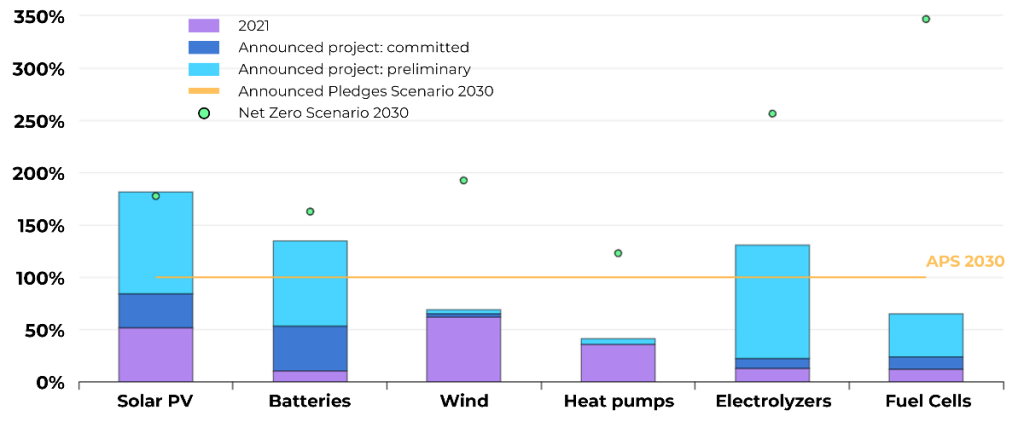The IEA’s New Energy Technology Perspectives Report

Last week, the International Energy Agency released its Energy Technology Perspectives report showcasing the progress on clean tech.
The big takeaway: If all currently announced projects get built, including those in their preliminary stage, many of the technologies are where they need to be to achieve the IEA’s Announced Pledges Scenario.
The big “but”: With the exception of solar PV, no technology is on pace to meet Net Zero by 2050. This confirms comments made by the IEA’s Chief Economist Chief Tim Gould on a recent podcast who said we’re likely not on track for the Announced Pledges scenario.
Announced projects relative to pace required for IEA scenarios
share of 2030 deployment

Other key insights:
- Geopolitical issues: China loomed like a boogeyman throughout the report with the country dominating the supply chain of clean technologies and the midstream processing of most critical minerals.
- More pipelines needed: New infrastructure will be the backbone of the future energy economy – large civil engineering projects, transmission lines, carbon pipelines, and ways to move hydrogen will all need to be developed and built.
- Energy projects, but faster: Western governments have spent the past two decades bureaucratizing the project review process, making project approvals like summiting Everest. Now we need to do the opposite – to accelerate decarbonization, project approvals need to happen much faster, with the report pointing to Germany’s recent success in fast-tracking approvals of new LNG terminals.
Bottom line: In a sense, the IEA is pushing to go back in time. In recent years, governments were happy to push manufacturing off to China and let other countries develop minerals and energy supplies. To achieve net zero by 2050, Western nations need to rewind the clock to more rapidly approve new mines, build processing and manufacturing plants, and develop power plants and energy infrastructure projects at home.




